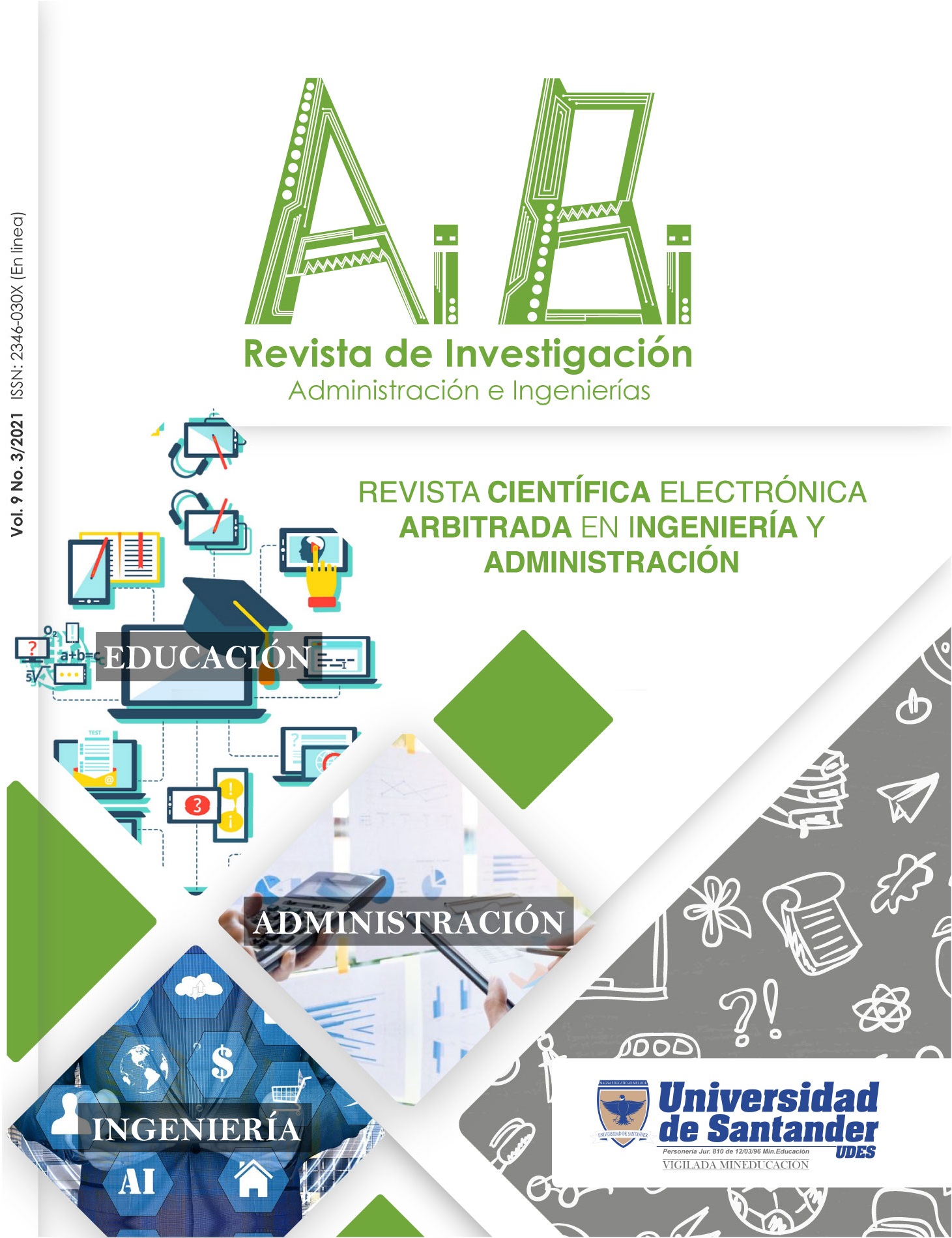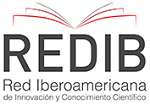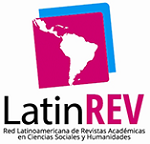Fundamentación teórica para la creación de un programa académico de ingeniería y ciencia de datos: una aplicación bibliométrica
DOI:
https://doi.org/10.15649/2346030X.2586Palabras clave:
Ciencia de datos, Bibliometría, Minería de datos, Big data, Estadística clásica, Machine learning, CurrículoResumen
El objetico es definir un enfoque teórico entorno a la ciencia de datos, que incluya objeto de estudio y métodos, como paso previo para el diseño curricular de un programa académico. El texto inicia con una revisión de la literatura entorno a la evolución del concepto de dato y los fundamentos epistemológicos de la estadística y el análisis de datos, mediante el uso de algoritmos. Se continúa con la bibliometría de la producción científica de mayor relevancia, 2000 artículos, haciendo uso del enfoque de caracterización temática, mediante palabras clave tomadas de trabajos indexados en SCOPUS. Se encontró que la mayoría de las palabras clave y temáticas relevantes se refieren a los métodos de la modelación de datos con algoritmos y a la gestión de tecnología para la administración de grandes bases de datos. Se caracterizó la productividad del análisis de datos derivados de información textual, multimedia y la web. También se revelaron las temáticas referidas a las aplicaciones empresariales dirigidas a la gestión del conocimiento y la inteligencia de negocios. Se concluye que el concepto de dato, como objeto de estudio, se amplía gracias a los alcances del análisis de datos con algoritmos; este método se combina con el enfoque estadístico clásico, que provee modelos formales de mejor interpretación. Se concluyó que el campo de aplicación de la nueva ciencia de datos es bastante amplio, en particular cuando esta ciencia se utiliza en contextos interdisciplinarios. Lo anterior justifica el diseño curricular de un programa académico centrado en esta temática.
Referencias
J. W. Tukey, “The future of data analysis,” Ann. Math. Stat., vol. 33, no. 1, pp. 1–67, 1962.
C. Maldonado and N. A. Gómez-Cruz, El mundo de las ciencias de la complejidad. Un estado del arte. Bogotá, Colombia: Universidad del Rosario, 2010.
C. Merow et al., “What do we gain from simplicity versus complexity in species distribution models?,” Ecography (Cop.)., vol. 37, no. 12, pp. 1267–1281, 2014, doi: 10.1111/ecog.00845.
K. V Katsikopoulos, “Bounded rationality: the two cultures,” J. Econ. Methodol., vol. 21, no. 4, pp. 361–374, 2014, doi: 10.1080/1350178X.2014.965908.
R. Descartes, Discurso del método. Ediciones Colihue SRL, 2004.
M. Bunge, “La ciencia: su método y su filosofía,” 1978.
M. Frické, “Big data and its epistemology,” J. Assoc. Inf. Sci. Technol., vol. 66, no. 4, pp. 651–661, 2015, doi: 10.1002/asi.23212.
D. Donoho, “50 years of data science,” J. Comput. Graph. Stat., vol. 26, no. 4, pp. 745–766, 2017, doi: 10.1080/10618600.2017.1384734.
L. Breiman, “Statistical modeling: The two cultures (with comments and a rejoinder by the author),” Stat. Sci., vol. 16, no. 3, pp. 199–231, 2001, doi: 10.1111/j.1740-9713.2005.00129.x.
K. Mardia and W. Gilks, “Meeting the statistical needs of 21st-century science,” Significance, vol. 2, no. 4, pp. 162–165, 2005, doi: 10.1111/j.1740-9713.2005.00129.x.
W. M. Briggs, “Everything wrong with p-values under one roof,” Studies in Computational Intelligence, vol. 809. Springer Verlag, 340 E. 64th Apt 9A, New York, United States, pp. 22–44, 2019, doi: 10.1007/978-3-030-04200-4_2.
T. Derrick, “The criticism of inferential statistics,” Educ. Res., vol. 19, no. 1, pp. 35–40, 1976.
J. R. Jamison, “The use of inferential statistics in health and disease: a warning,” South African Med. J., vol. 57, no. 19, pp. 783–785, 1980.
B. L. Hopkins, B. L. Cole, and T. L. Mason, “A critique of the usefulness of inferential statistics in applied behavior analysis,” Behav. Anal., vol. 21, no. 1, pp. 125–137, 1998.
A. Charpentier, E. Flachaire, and A. Ly, “Econometrics and machine learning,” Econ. Stat., vol. 2018, no. 505–506, pp. 147–169, 2018, doi: 10.24187/ecostat.2018.505d.1970.
D. Qin, “Let’s take the bias out of econometrics,” J. Econ. Methodol., vol. 26, no. 2, pp. 81–98, 2019, doi: 10.1080/1350178X.2018.1547415.
S. Athey and G. W. Imbens, “Machine Learning Methods That Economists Should Know about,” Annu. Rev. Econom., vol. 11, pp. 685–725, 2019, doi: 10.1146/annurev-economics-080217-053433.
M. Molina and F. Garip, “Machine Learning for Sociology,” Annual Review of Sociology, vol. 45. Annual Reviews Inc., Department of Sociology, Cornell University, Ithaca, NY 14853, United States, pp. 27–45, 2019, doi: 10.1146/annurev-soc-073117-041106.
S. Mützel, “Facing big data: Making sociology relevant,” Big Data Soc., vol. 2, no. 2, p. 2053951715599179, 2015.
D. A. McFarland, K. Lewis, and A. Goldberg, “Sociology in the era of big data: The ascent of forensic social science,” Am. Sociol., vol. 47, no. 1, pp. 12–35, 2016.
K. Healy and J. Moody, “Data visualization in sociology,” Annu. Rev. Sociol., vol. 40, pp. 105–128, 2014.
P. Barrett, “What if there were no psychometrics? Constructs, complexity, and measurement,” J. Pers. Assess., vol. 85, no. 2, pp. 134–140, 2005, doi: 10.1207/s15327752jpa8502_05.
N. Bolger, “Data analysis in social psychology,” Handb. Soc. Psychol., vol. 1, pp. 233–265, 1998.
D. Bzdok and J. P. A. Ioannidis, “Exploration, Inference, and Prediction in Neuroscience and Biomedicine,” Trends Neurosci., vol. 42, no. 4, pp. 251–262, 2019, doi: 10.1016/j.tins.2019.02.001.
A. L. Boulesteix and M. Schmid, “Machine learning versus statistical modeling,” Biometrical J., vol. 56, no. 4, pp. 588–593, 2014, doi: 10.1002/bimj.201300226.
J. Wang and Q. Tao, “Machine learning: The state of the art,” IEEE Intell. Syst., vol. 23, no. 6, pp. 49–55, 2008.
R. Gould, “Data literacy is statistical literacy,” Stat. Educ. Res. J., vol. 16, no. 1, pp. 22–25, 2017.
P. Bühlmann, “Comments on: Data science, big data and statistics,” Test, vol. 28, no. 2, pp. 330–333, 2019, doi: 10.1007/s11749-019-00646-6.
S. Mullainathan and J. Spiess, “Machine learning: an applied econometric approach,” J. Econ. Perspect., vol. 31, no. 2, pp. 87–106, 2017, doi: 10.1257/jep.31.2.87.
J. Blumenstock, G. Cadamuro, and R. On, “Predicting poverty and wealth from mobile phone metadata,” Science (80-. )., vol. 350, no. 6264, pp. 1073–1076, 2015, doi: 10.1140/epjds/s13688-017-0125-5.
L. Dong, S. Chen, Y. Cheng, Z. Wu, C. Li, and H. Wu, “Measuring economic activities of China with mobile big data,” arXiv Prepr. arXiv1607.04451, 2016, doi: 10.1140/epjds/s13688-017-0125-5.
B. Yu, “Embracing statistical challenges in the information technology age,” Technometrics, vol. 49, no. 3, pp. 237–248, 2007, doi: 10.1198/004017007000000254.
S. Tonidandel, E. B. King, and J. M. Cortina, “Big Data Methods: Leveraging Modern Data Analytic Techniques to Build Organizational Science,” Organ. Res. Methods, vol. 21, no. 3, pp. 525–547, 2018, doi: 10.1177/1094428116677299.
B. Beaton, A. Acker, L. Di Monte, S. Setlur, T. Sutherland, and S. E. Tracy, “Debating data science: A roundtable,” Radic. Hist. Rev., vol. 2017, no. 127, pp. 133–148, 2017, doi: 10.1215/01636545-3690918.
D. V Carvalho, E. M. Pereira, and J. S. Cardoso, “Machine learning interpretability: A survey on methods and metrics,” Electron., vol. 8, no. 8, 2019, doi: 10.3390/electronics8080832.
P. J. H. Daas, M. J. Puts, B. Buelens, and P. A. M. van den Hurk, “Big data as a source for official statistics,” J. Off. Stat., vol. 31, no. 2, pp. 249–262, 2015, doi: 10.1515/JOS-2015-0016.
M. Aria and C. Cuccurullo, “bibliometrix: An R-tool for comprehensive science mapping analysis,” J. Informetr., vol. 11, no. 4, pp. 959–975, 2017, doi: 10.1016/j.joi.2010.10.002.
M. J. Cobo, A. G. López-Herrera, E. Herrera-Viedma, and F. Herrera, “An approach for detecting, quantifying, and visualizing the evolution of a research field: A practical application to the fuzzy sets theory field,” J. Informetr., vol. 5, no. 1, pp. 146–166, 2011, doi: 10.1016/j.joi.2010.10.002.
V. Batagelj and M. Cerinšek, “On bibliographic networks,” Scientometrics, vol. 96, no. 3, pp. 845–864, 2013, doi: 10.1007/s11192-012-0940-1.
K. Börner, C. Chen, and K. W. Boyack, “Visualizing knowledge domains,” Annu. Rev. Inf. Sci. Technol., vol. 37, no. 1, pp. 179–255, 2003, doi: 10.1002/aris.1440370106.
C. Cuccurullo, M. Aria, and F. Sarto, “Foundations and trends in performance management. A twenty-five years bibliometric analysis in business and public administration domains,” Scientometrics, vol. 108, no. 2, pp. 595–611, 2016.
M. Callon, J. P. Courtial, and F. Laville, “Co-word analysis as a tool for describing the network of interactions between basic and technological research: The case of polymer chemsitry,” Scientometrics, vol. 22, no. 1, pp. 155–205, 1991.
Descargas
Publicado
Cómo citar
Número
Sección
Altmetrics
Descargas
Licencia
La revista ofrece acceso abierto bajo una Licencia Creative Commons Attibution License

Esta obra está bajo una licencia Creative Commons Attribution (CC BY 4.0).












